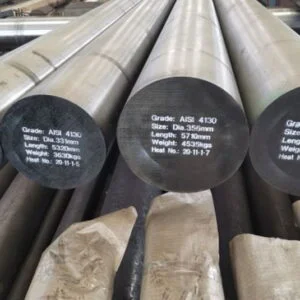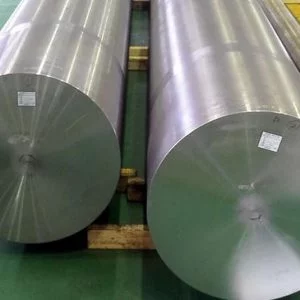Introduction

In the realm of metallurgy, understanding the intricacies of heat treatment processes is paramount. Among these processes, quenching and tempering play crucial roles in altering the properties of steel alloys such as 4130. This blog post delves into the significance of quenching and tempering in the heat treatment of 4130 steel, elucidating their mechanisms, effects, and applications.
Understanding 4130 Heat Treatment
4130 steel, also known as chromoly steel, is a versatile alloy composed primarily of iron, chromium, and molybdenum. It is renowned for its exceptional strength, toughness, and weldability, making it a preferred choice for a wide range of industrial applications. From aerospace components to bicycle frames, 4130 steel is prized for its ability to withstand high stress environments while maintaining structural integrity.
However, to fully unlock its potential, 4130 steel often undergoes heat treatment. This process involves subjecting the steel to controlled heating and cooling cycles to alter its microstructure and mechanical properties. The primary objectives of heat treatment for 4130 steel are to enhance its hardness, strength, toughness, and machinability, depending on the specific requirements of the application.
Quenching and tempering are the two main stages of the heat treatment process for 4130 steel. During quenching, the steel is rapidly cooled from elevated temperatures, typically from austenitizing temperatures above 800°C (1472°F), to room temperature or below. This rapid cooling transforms the microstructure of the steel, inducing the formation of martensite, a hard and brittle phase that contributes to increased hardness and strength.
Quenching: Transforming Structure for Strength
Quenching involves rapid cooling of the heated steel, inducing a phase transformation that enhances hardness and strength. In the case of 4130 steel, quenching from austenitizing temperatures leads to the formation of martensite, a hard and brittle phase crucial for achieving desired mechanical properties.
Tempering: Balancing Strength and Ductility
While quenching enhances hardness, it often results in brittleness. Tempering, a subsequent heat treatment step, alleviates this brittleness by reheating the quenched steel to a lower temperature. This process allows for the diffusion of carbon atoms, facilitating the transformation of martensite into tempered martensite or other microstructures. In the context of 4130 steel, tempering aims to strike a balance between strength and ductility, tailoring the material to specific application requirements.
Effects of Quenching and Tempering on 4130 Steel Properties
The combined effects of quenching and tempering significantly influence the mechanical properties of 4130 steel. Through careful control of heat treatment parameters such as temperature and cooling rate, engineers can achieve desired outcomes in terms of hardness, strength, toughness, and machinability.
Effects of Quenching and Tempering on 4130 Steel Properties
| Property | Quenched 4130 Steel | Tempered 4130 Steel |
|---|---|---|
| Hardness | High | Moderate |
| Strength | High | High |
| Toughness | Low | Improved |
| Ductility | Low | Moderate to High |
| Machinability | Poor | Improved |
Applications of 4130 Heat Treated Steel

4130 steel finds applications across various industries, including aerospace, automotive, and oil and gas. Heat-treated 4130 steel components, with their superior strength, toughness, and fatigue resistance, are employed in critical structural and mechanical applications where reliability and performance are paramount.
Conclusion
Quenching and tempering are indispensable processes in the heat treatment of 4130 steel, enabling the optimization of its mechanical properties for diverse applications. By understanding the mechanisms and effects of these treatments, engineers can harness the full potential of 4130 steel, delivering solutions that meet the rigorous demands of modern industries.
FAQ
Q:What is 4130 steel?
A:4130 steel is a chromium-molybdenum alloy renowned for its exceptional strength, toughness, and weldability, making it a popular choice in various engineering applications.
Q:Why is heat treatment necessary for 4130 steel?
A:Heat treatment allows for the modification of 4130 steel’s microstructure and mechanical properties, enhancing its suitability for specific applications.
Q:What are the key differences between quenching and tempering?
A:Quenching involves rapid cooling to induce phase transformations and increase hardness, while tempering involves reheating to improve ductility and toughness.
Q:How do engineers control the heat treatment process for 4130 steel?
A:Engineers employ precise control over heating, cooling, and tempering parameters, such as temperature, time, and cooling rate, to achieve desired material properties.
Q:What are the common applications of heat-treated 4130 steel?
A:Heat-treated 4130 steel components are utilized in aerospace structures, automotive chassis, oil and gas drilling equipment, and various other critical engineering applications requiring high strength and durability.
This comprehensive exploration underscores the importance of quenching and tempering in the heat treatment of 4130 steel, offering valuable insights for engineers and metallurgists alike.
